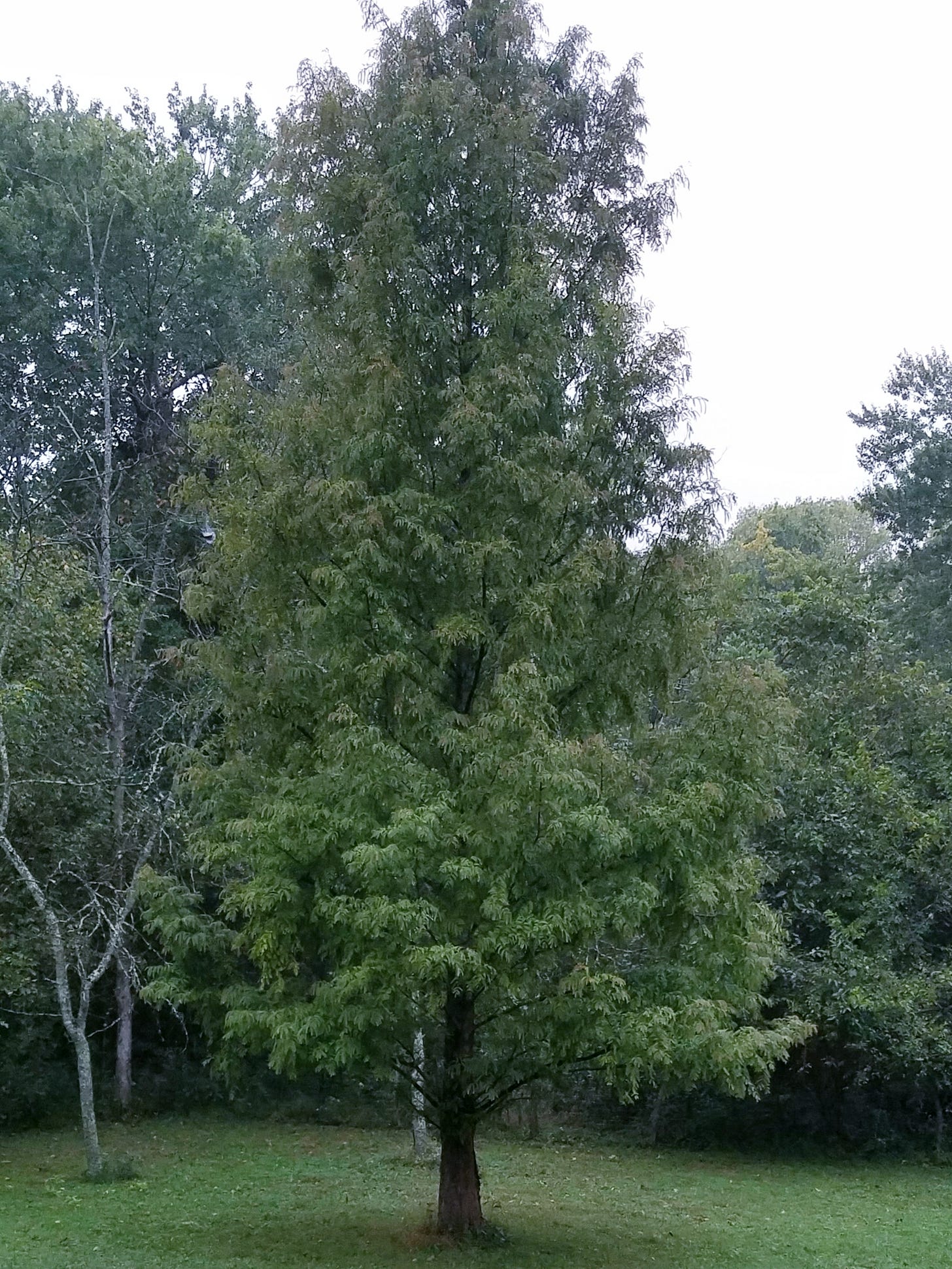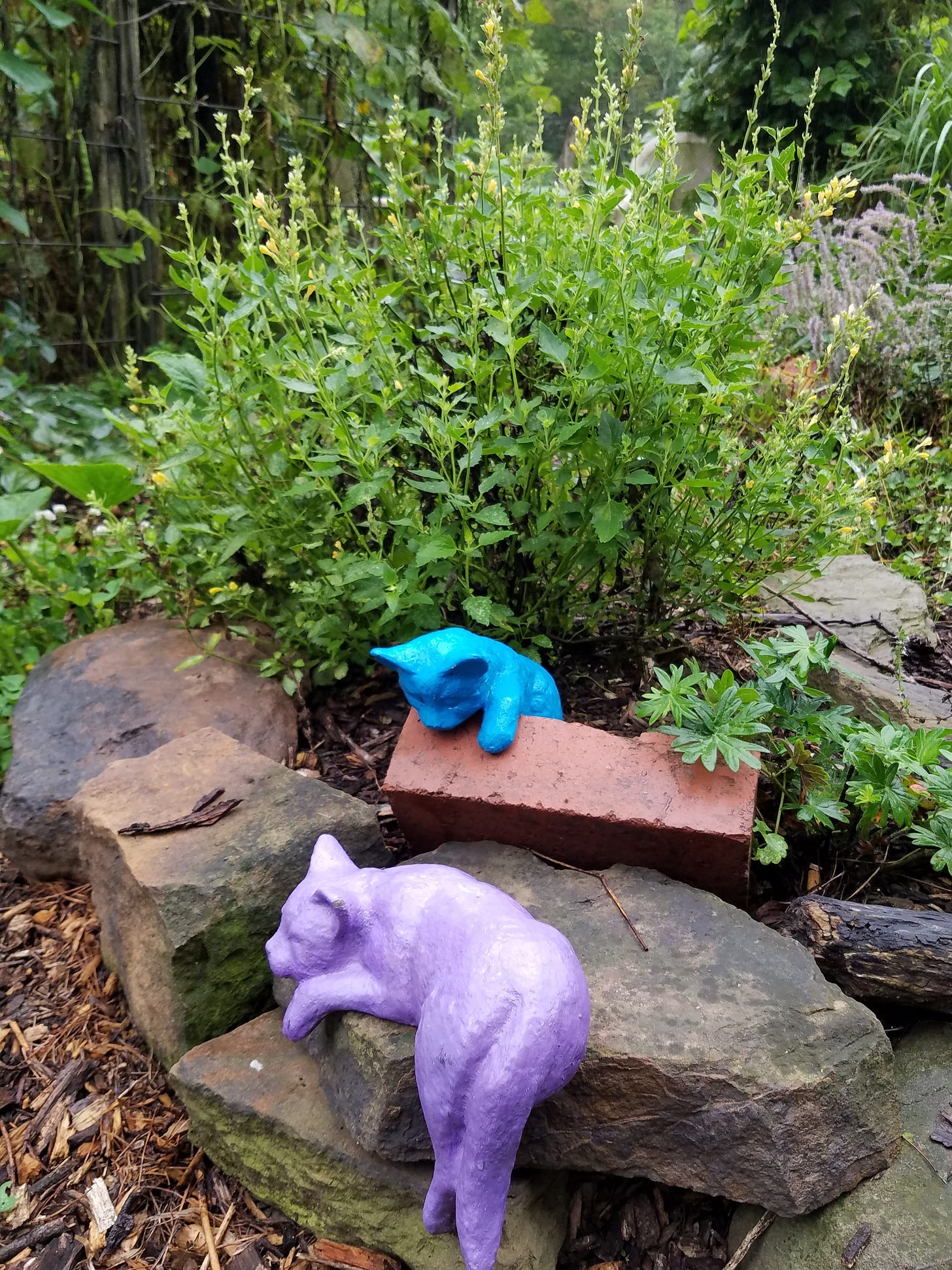Botanical words for aspiring nerds
Impress your friends and gain social status!
I love words, especially botanical terms that elucidate useful concepts for gardeners. Here are some of my favorites.
Marcescent describes leaves that change color and wither, but do not fall. This phenomenon is highly annoying to some homeowners as it interferes with plans to remove all dead leaves from their pampered lawns by a certain date, say Thanksgiving. I would not be at all surprised if in the future a spray-on RTU product is introduced that will force trees to release their leaves so OCD gardeners can stay on schedule.
Marcescence is useful because it allows me to easily spot the oaks and birches in the woods which blend in during the summer. It's exciting to see these uncommon trees among the ubiquitous cherries and maples.
The term climacteric is used to describe fruit that ripens after harvest. Bananas, tomatoes, and avocados are climacteric fruit, but apples, peaches, and pears also fall into this category. The pears and peaches I've purchased out of season that refuse to ripen seem to counteract this claim when they become mushy and tasteless rather than sweet and ripe. This is explained by the fact that fruit must reach a minimum level of ripeness before being picked in order to ripen on your counter. Fruits are picked when most convenient for the grower and shipper which is often before this benchmark is reached.
Pawpaw, the beloved fruit of hillbillies that is experiencing a cultural renaissance, is climacteric. This to the advantage of foragers who come across wild patches. Each fruit in a cluster is often at a different stage of maturity, but most may be harvested and enjoyed later due to climacterism.
Pollinators are creatures that visit flowers. Grains of pollen stick to their bodies and are carried to others flowers where pollination occurs. Honey bees come to mind when we think of pollinators, but flies, bats, moths, butterflies, wasps, beetles, and if course many North American native bees are out there pollinating our plants as well.
Pollinizers are plants that provide pollen for other plants. For example gardeners who wish to enjoy homegrown apples are advised to plant at least two varieties that bloom at about the same time. Each can provide pollen for the other and thus help ensure a good harvest. Many peach varieties on the other hand are self- fruitful or self-fertile, meaning they do not require pollination from a different variety to set fruit. They aren't necessarily self-pollinating however, as they still require members of the animal kingdom to assist in moving pollen from one flower to another.
“What are these weird bumps on my tomato vines?” is a question you might see in gardening groups. They aren't a sign of disease or insect damage: they are adventitious roots. These are simply roots that form in an unexpected place, often emerging from stem tissue. Vines can form such roots as they crawl over the ground and seek to expand their territory. It is the capacity to form adventitious roots that propagators take advantage of when rooting cuttings or using layering to make more identical plants.
Habit is a word all English speakers are familiar with, but did you know that trees have habits? I don't mean the annoying ones like falling on power lines or dropping sticks in your yard. I'm referring to a tree’s overall shape and form. Picture a tree's silhouette and you will have a good idea of what is meant by the term “habit.” A willow might have a broad, weeping form, as wide as it is tall. Elms are shaped somewhat like vases. River birches often have many trunks, giving them a tall, shrubby look. Individuals of the same species can have very different habits depending on whether they are open-grown or found in a forest.
Habit is an important trait in identifying trees, especially in winter when no leaves are present or if you are at some distance from the tree in question. I'm usually hopeless at identifying trees from photos of leaves only, which gave me an inferiority complex until I realized that I rely heavily on observing a tree's habit when I'm identifying in the woods. Include photos of the entire tree or shrub when you ask for id in online groups to help people like me.
Yesterday I turned on the radio on my way to work, only to hear that a small theater company was experiencing an existential crisis. I think not, since this term refers to the particularly human experience of angst when contemplating such questions as “Why are we here?” and “What is the meaning of life?” The announcer perhaps meant to say existential threat, which has very annoyingly come to mean a threat to one's existence. (One more thing to blame on millennials!) I disapprove of this usage and think “deadly threat” or something similar should be used. If you're thinking that my last paragraph isn't related to botany, you are correct. I just felt like complaining. Thanks for reading and have a felicitous day!







Hah, these are good! I often find myself double checking a word's meaning because I may use it one way in my head only to learn it really means something else!